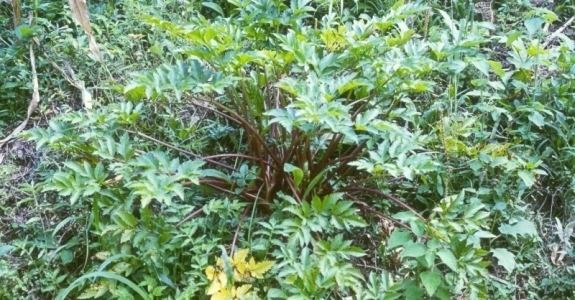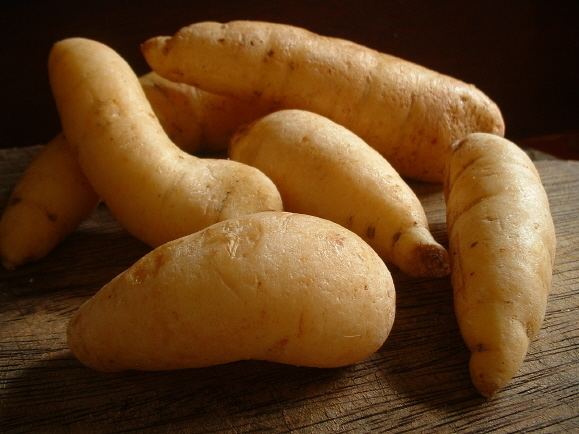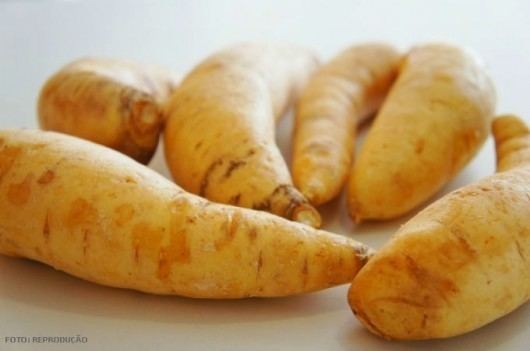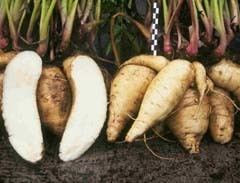Kingdom Plantae Family Apiaceae Scientific name Arracacia xanthorrhiza Higher classification Arracacia | Order Apiales Genus Arracacia Rank Species | |
 | ||
Similar Water, Cozido, Cassava, Sugar, Dried meat | ||
Arracacia xanthorrhiza is a root vegetable originally from the Andes, somewhat intermediate between the carrot and celery. Its starchy taproot is a popular food item in South America where it is a major commercial crop.

The name arracacha (or racacha) was borrowed into Spanish from Quechua raqacha, and is used in the Andean region. The plant is also called apio or apio criollo ("Creole celery") in Venezuela, zanahoria blanca in Ecuador, virraca in Peru, and mandioquinha ("little cassava") or batata-baroa ("baronness potato") in Brazil. It is sometimes called white carrot in English, but that name properly belongs to white varieties of the common carrot.

The leaves are similar to parsley, and vary from dark green to purple. The roots resemble fat short carrots, with lustrous off-white skin. The interior may be white, yellow, or purple.

Cultivation and uses

The most important part is the starchy root. It cannot be eaten raw, but when cooked, it develops a distinctive flavor and aroma that have been described as "a delicate blend of celery, cabbage and roast chestnuts".
The boiled root has about the same uses as boiled potatoes, including side dishes, purées, dumplings and gnocchi, pastries, creamy soup ganshed with chopped cilantro and croutons, etc., with the advantage of its flavor and (depending on the variety) its intense color. In the Andes region, it is made into fried chips, biscuits, and coarse flour. Because it is highly digestible (due to the small size of its starch grains), purées and soups made from it are considered excellent for babies and children.
Fresh arracachas keep in the refrigerator for 2 to 3 weeks. 100 grams of arracacha provide about 100 calories (26 g of dry matter, 23 g being carbohydrate, and less than 1 g of protein). The plant is rich in calcium (four times as much as potatoes).
The yellow cultivar contains substantial amounts of carotenoid pigments, precursors to vitamin A, to the point that excessive consumption of arracachas may cause yellowing of the skin (a condition that is not considered to be harmful).
The young stems can be eaten cooked or in salads, and the leaves can be fed to livestock.
The plant is very susceptible to viruses and is slow to mature (10–12 months) but requires much less fertilizer input than the potato; its cultivation can be very lucrative. It was imported into Brazil in the 19th century and has been grown commercially since the 1960s. Brazilian crop improvement programs have developed varieties that grow in seven months.
The harvest season in the Southern Hemisphere spans from January to September. The roots must be picked promptly lest they become woody. They have a short shelf life and must reach consumers within a week of harvest. The plant grows west of the Andes at altitudes varying from 200 m to 3600 m, but optimally between 1800 and 2500 m. It is frequently grown with other crops such as maize, beans, and coffee.
